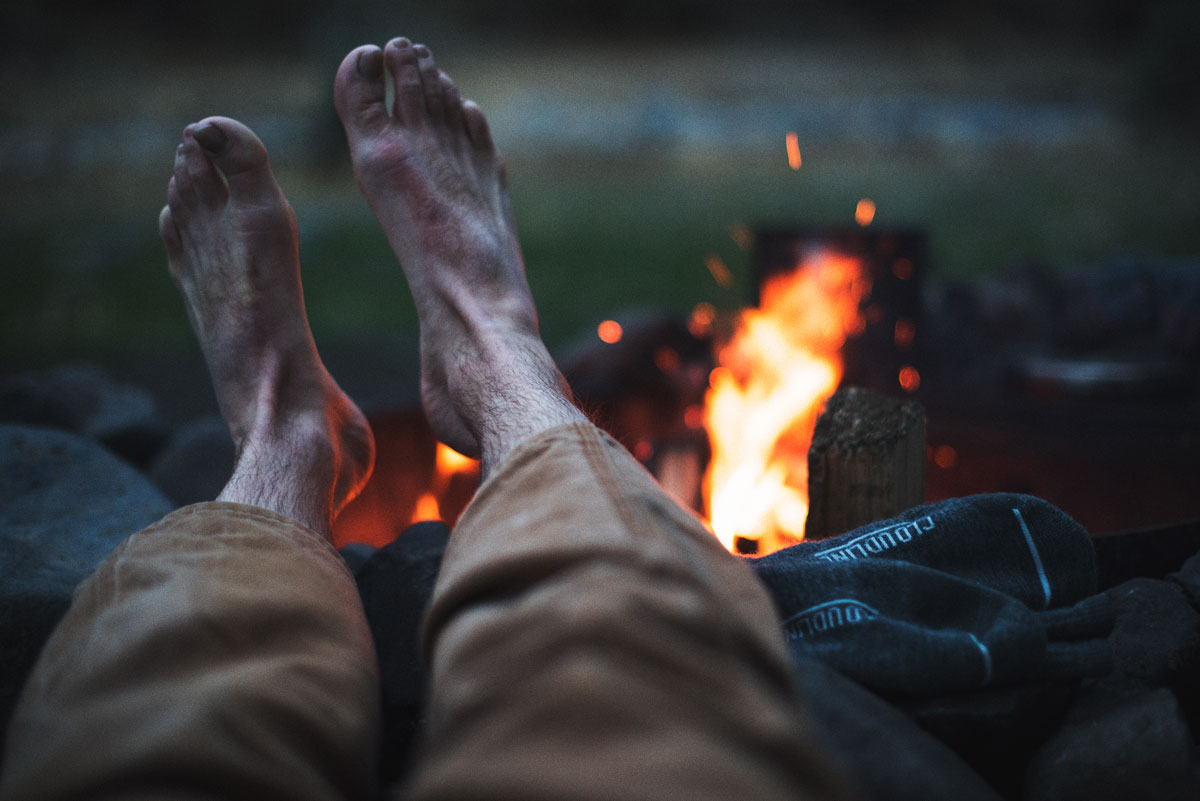
The Ultimate Guide to Preventing (And Dealing With) Wet Feet on the Trail
If you’ve ever hiked with wet feet, you know how unpleasant it can be. Depending on the season, rain, snow, mud, dew, and even your sweat can soak your socks and shoes. When this happens, you’re left with wet, potentially cold, and uncomfortable feet. And the longer your feet spend in wet socks and shoes, the more serious the discomfort can get.
As an avid hiker, caring for your feet is critical. We’re not suggesting you avoid hiking in the rain — in fact, we encourage it (Cloudline is based in Seattle, after all!). But you should be aware of the dangers of hiking with wet feet and know how to prevent it — and how to deal with it when it’s inevitable.
Dangers of Hiking With Wet Feet

If you don’t take the proper precautions to keep your feet warm and dry, you’re at higher risk of developing one of the following:
- Blisters: When your feet are wet — even just a little — you experience more friction between your socks and your feet. On the trail, that friction can quickly lead to painful blisters.
- Infection: Wet feet can lead to fungal infections, like athlete’s foot or toenail fungus. These infections are… unpleasant, especially if you’re someone who spends a lot of time on your feet. And they may require ointments, creams, or other antifungal products to resolve.
- Cold injury: In cooler weather, moisture can be dangerous. That’s because wet clothes can lead to hypothermia — even when it’s well above freezing. Plus, wet feet can put you at a greater risk of frostbite, which can cause permanent tissue damage.
In short, wet feet are uncomfortable at best and dangerous at worst. So the more you can do to avoid hiking with wet feet, the better.
Staying Dry

You can always dry your wet feet (as we’ll discuss below). But it’s even better if you can prevent them from getting wet in the first place. Use the following tips to help you stay dry on the trail.
Wear Merino Wool Hiking Socks
There’s a reason you’ll rarely hear a hiker recommend cotton: When it gets wet, it stays wet. On the other hand, merino wool wicks moisture, dries quickly, and breathes. Plus, even if it does get wet, it’ll still keep you warm. Merino wool makes for great layers all around , but it’s especially ideal when it comes to your socks. No matter the season, merino wool socks are a great choice for keeping your feet as dry as possible.
Choose the Right Footwear
There are some contradictory opinions when it comes to the best choice for hiking footwear. The better choice for you probably depends on where you’re hiking.
On one hand, waterproof hiking boots can keep you dry in wet conditions. You can even add waterproofing treatment as needed for extra protection against the elements. But just as waterproof boots will keep the moisture out, they’ll also keep moisture in. That’s why they may not be the best choice for hot-weather hiking where you’re likely to sweat.
For drier, warmer hikes, you may prefer breathable hiking shoes. While they won’t keep your feet dry if you walk through a puddle, they’ll allow your feet to breathe and dry faster if they do get wet.
Wear Gaiters
If you’re hiking in wet, muddy, or snowy conditions, you may want to consider bringing along a pair of gaiters. Gaiters fasten to your hiking boots and protect your feet and lower legs from moisture. They also prevent rain, snow, mud, and other debris from getting into your shoes or boots. They come in a variety of heights so you can find the right fit for the weather and conditions you’re hiking in.
Drying Out

No matter how well you prepare, you can’t always avoid wet feet on the trail. That’s why it’s equally important to be able to dry out your feet when you need to. The following tips can help you make sure wet feet don’t ruin your entire hike.
- Bring extra socks: It’s never a bad idea to throw an extra pair in your pack, whether you’re on a day hike or a multi-day trek. When your feet get super soggy, a fresh pair of socks can make all the difference.
- Air-dry your socks: Once you trade your wet socks for a dry pair, dry out the wet ones by hanging them from the outside of your pack — unless, of course, it’s raining.
- Pack camp shoes for overnight trips: There’s nothing worse than putting on a dry pair of socks only to have to stick your feet back into damp shoes. Camp shoes — like sandals or Crocs — not only feel like heaven after a day on the trail, but they give your hiking shoes a chance to dry out.
- Let your feet breathe: Any time you stop for an extended break on the trail, take off your socks and shoes, and let your feet air out. Lay your socks and shoes in the sun to let them dry, too.
- Dry out your boots: When you return from a hike, don’t throw your boots in the closet. Instead, give them a chance to dry thoroughly. Take out the insoles, put the insoles and shoes in the sun, and — if they’re really wet — stuff your shoes with newspaper.
Don’t Let Wet Feet Dampen Your Fun
Wet feet may not bother you at first, but over time, they might just ruin your hike. Frostbite, infections, and blisters are no joke — so follow these tips to keep your feet warm and dry.
If you’re looking for more tips to keep you safe and comfy on the trail, subscribe to our email list. We’ll keep you posted with our latest blogs, plus current deals on your favorite hiking socks.




